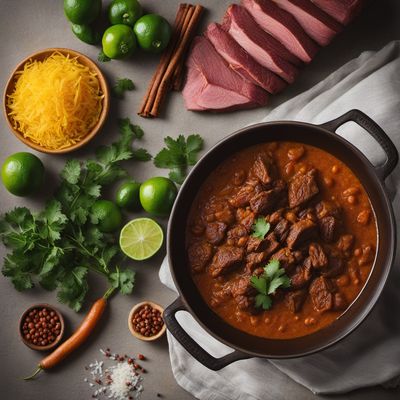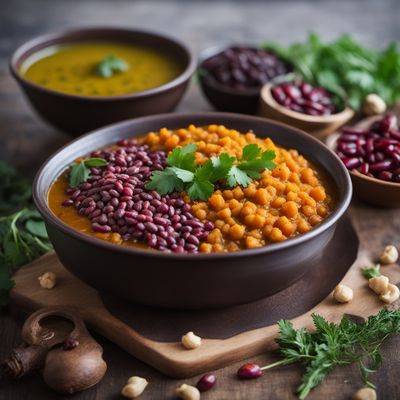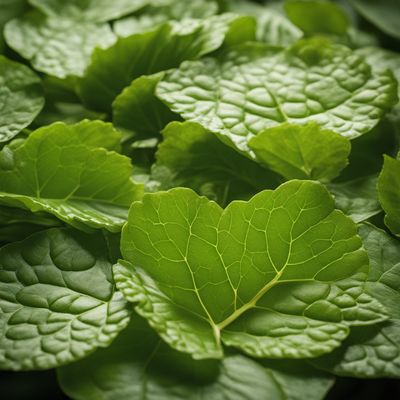
Ingredient
Lime infusion leaves
Zesty Citrus Elixir: Unveiling the Magic of Lime Infusion Leaves
Lime infusion leaves are dark green, glossy leaves with a unique double leaf structure. They have a strong citrus aroma that is reminiscent of lime zest, with a slightly floral undertone. The leaves are typically used in their whole form, as they release their flavor when cooked or crushed. They have a firm texture and can be easily torn or shredded for use in recipes. Lime infusion leaves impart a bright and refreshing flavor to dishes, making them a popular choice in both savory and sweet preparations.
Origins and history
Lime infusion leaves have their origins in Southeast Asia, particularly in Thailand, Indonesia, and Malaysia. They have been used in these regions for centuries and are an integral part of their culinary traditions. Lime leaves are believed to have medicinal properties and are often used in traditional herbal remedies. They are also considered sacred in some cultures and are used in religious ceremonies.
Nutritional information
Lime infusion leaves are low in calories and are primarily used for their flavor rather than their nutritional content.
Allergens
Lime infusion leaves are generally safe for consumption and are not known to cause allergies. However, individuals with citrus allergies should exercise caution.
How to select
When selecting lime infusion leaves, look for fresh, vibrant green leaves that are free from blemishes or discoloration. The leaves should have a strong citrus aroma. Avoid leaves that appear wilted or have a yellowish hue, as they may be past their prime.
Storage recommendations
To maintain the freshness of lime infusion leaves, store them in a resealable plastic bag or an airtight container in the refrigerator. They can be kept for up to two weeks, but it is best to use them as soon as possible for optimal flavor.
How to produce
Lime infusion leaves can be grown at home by planting a kaffir lime tree or by purchasing a lime tree sapling from a nursery. They require a warm and sunny climate to thrive and can be grown in pots or directly in the ground. Regular watering and well-drained soil are essential for their growth.
Preparation tips
Lime infusion leaves are typically used in recipes by adding them whole to infuse their flavor into the dish. Before using, remove the central stem and discard it. The leaves can be torn or shredded for use in soups, curries, stir-fries, or marinades. They can also be used to flavor beverages, such as teas or cocktails. Lime infusion leaves are often used in combination with other aromatic ingredients like lemongrass or ginger for a more complex flavor profile.
Substitutions
If lime infusion leaves are not available, a suitable substitute can be a combination of lime zest and lemon verbena leaves, which can provide a similar citrusy and floral flavor.
Culinary uses
Lime infusion leaves are widely used in Southeast Asian cuisine, particularly in Thai, Indonesian, and Malaysian dishes. They are commonly used in curries, soups, stir-fries, and noodle dishes to add a bright and refreshing citrus flavor. Lime leaves are also used to infuse flavor into rice, sauces, and marinades. In desserts, they can be used to flavor ice creams, custards, or sorbets. Additionally, lime infusion leaves are often used to garnish dishes for their aromatic appeal.
Availability
Lime infusion leaves are commonly available in Southeast Asian countries, such as Thailand, Indonesia, Malaysia, and Vietnam. They can also be found in specialty Asian grocery stores or online.
More ingredients from this category
Recipes using Lime infusion leaves

Khoresht-e-Chaghartameh with Saffron Rice
Saffron-infused Chicken Stew: A Taste of Iran

Gheymeh Nesar - Persian Saffron Meat Stew
Golden Delight: A Flavorful Journey into Persian Cuisine

Haute Ash-e Jo: A Gourmet Twist on a Traditional Iranian Dish
Elevating Ash-e Jo: A Haute Cuisine Delight

Kuwaiti Spiced Lamb Rice (Machboos Laham)
Saffron-infused Delight: Kuwaiti Spiced Lamb Rice

